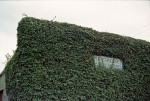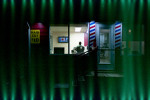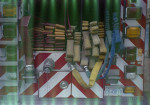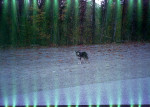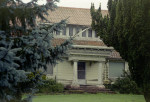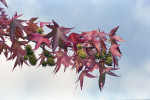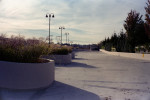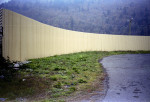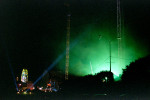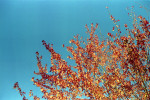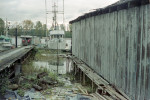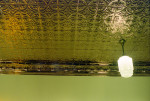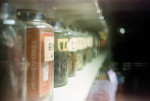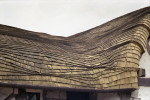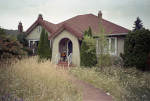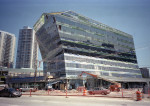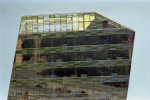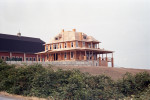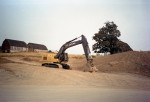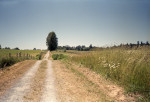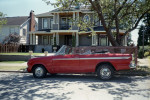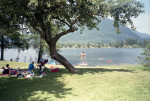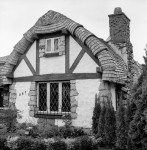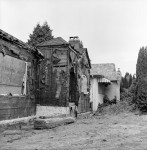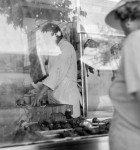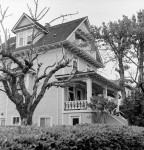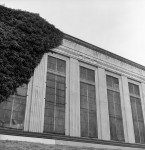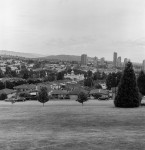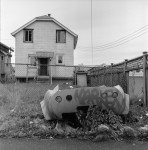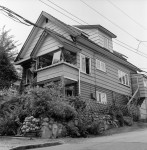Apr
28
2016

This post is more about the film than the camera (Other Posts about the A-1 can be seen here). I came into possession of two rolls of Ferrania Solaris via a thrift store. I don’t know the age of it but it has to be outdated simply for the fact that Ferrania isn’t currently making film and haven’t for a while. They are at this time making an effort to restart production in a new smaller plant Film Ferrania. I didn’t hold out that much hope for this film with its unknown provenance but unlike so many of my odd film experiences this exceeded my expectations it has a graininess to it similar to but more subtle than Adox color implosion while keeping the colours more realistic.

It ended up being quite contrasty but still retained details in the darks unlike many other outdated films I’ve encountered. I shot this roll on a drab dark day so maybe I will wait for a nice bright spring day to shoot the second roll. I wish Ferrania much success with getting their plant up and running whether they ever produce Solaris again or not.
no comments | posted in Cameras, Photography, Processing
Apr
17
2016

The Ricoh R1 is much like two cameras in one as I’ve stated previously. The 30mm lens is a fantastic performer and the 24mm panoramic has a toy camera aesthetic. The decision to use Adox color implosion film is more in keeping with the latter but I like the unmistakable ‘filmness’ either way. The gallery that follows is a little of each and for the moment it ‘s the 24mm panoramic film camera I use as my Minolta Freedom Vista was stolen from my vehicle. I suppose the joke is somewhat on them as there isn’t a big market for film cameras let alone ones that only take panoramic shots. It’s more likely to end up in a dumpster than to take another picture but I hope it does get used even if it isn’t by me. In the meantime the R1 is one of the best point and shoots I have so I turn to it often.
1 comment | tags: adox, color implosion, film, panoramic, Ricoh | posted in Cameras, Photography
Apr
9
2016

The Konica AF3 and this one with the date stamp the AF3D marked the end of the 16 year run for the Konica C35 and its variations. From 1967 to 1983 Konica had produced many models adding improvements and features along the way but always with a fixed focal length lens. This final version had a 35mm f2.8 lens of 4 elements and autofocus. It’s a great lens despite my gallery images but the camera itself is less than inspiring. It was made available in other colours perhaps that’s what it needs. The fact that Konica did not include a film advance motor but it still has a film advance lever is a nice touch as it makes the camera very quiet to operate. You manually set the film speed but it is a limited range of 100-400 ASA so 200 speed film is probably the best allowing for +- 1 stop of adjustment as needed by overriding this setting.
This is perhaps the worst roll of expired film I have ever come across it is or was Kodak Max 400. The other roll of film in the tank did not have any issues and the camera is unlikely to have caused this so the film is the only culprit left. The images were well enough received on Instagram with some people likely wondering what filter I had used.
no comments | posted in Cameras, Photography
Apr
4
2016
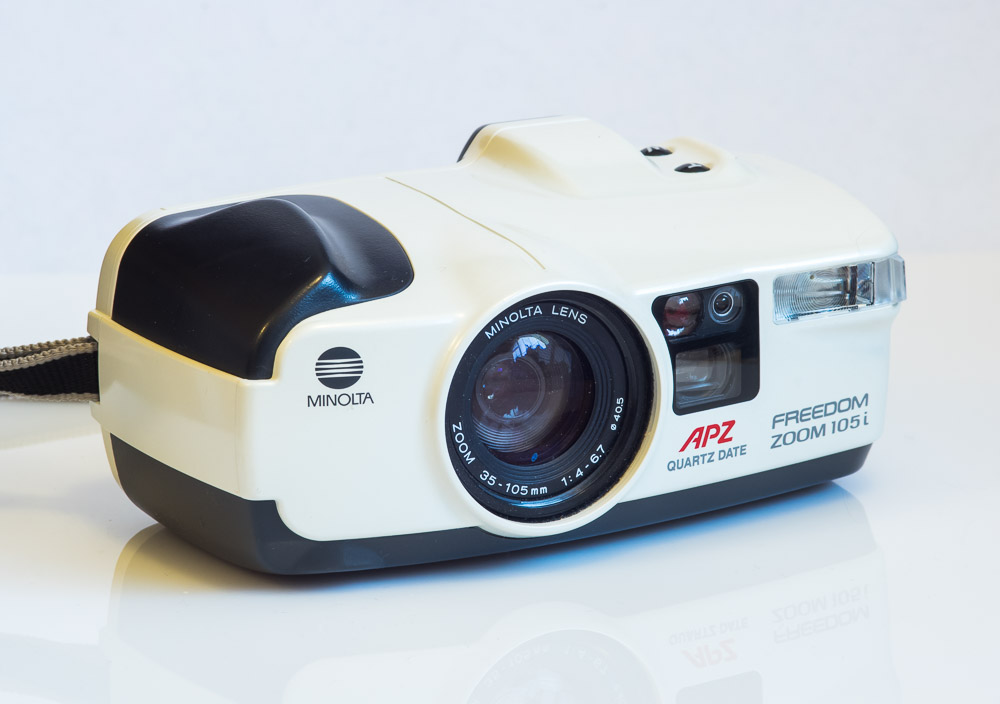
Only from the mind of Minolta, that was a marketing tag line used by the camera maker to denote the leading edge technological aspects of their gear. In the case of the Freedom Zoom 105i though only from the mind of the marketing department. This feature could only have been dreamed up by a non photographer trying to make their product stand out. It has to be one of the most ill conceived features ever added to a camera. What is it exactly, you may be wondering considering that you probably have never seen one of these cameras and may not ever. It is an automatic zoom feature, (Advanced Program Zoom), and depending on the distance to the subject as determined by the autofocus system it will zoom in or out. Minolta says the camera suggests composition. Trying to use the camera I found myself in a constant battle. You see a nice sweeping landscape and want to take a wide shot, oh no you don’t the camera insists that you zoom in. You want to zoom in and isolate a subject, oh no you don’t the camera knows better. All that wouldn’t matter so much if it stopped once you tried to make an adjustment but it continues to zoom around. The only solution aside from hurling the camera at a solid object is to override the system by holding down both zoom buttons at the same time… Every time you turn the thing on. A T.V. ad from around 1990 suggests that it has a mind of its own making it easy for anyone to take a picture, only from the mind of Minolta.
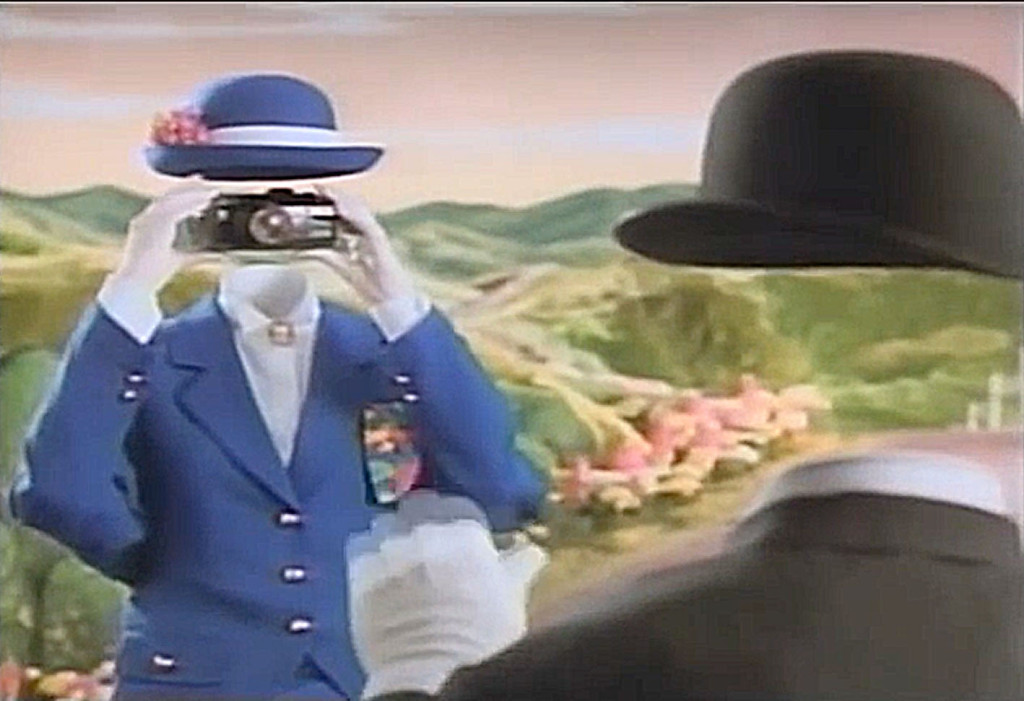
The camera is also larger than necessary given that it only has a 35-105mm f4-6.7 zoom. It looks more like it belongs as a monocular vision system for a storm trooper in Star Wars. To be fair though ergonomically its actually pretty good and is perhaps the easiest camera to hold steady that I have ever encountered thanks to the natural way your hands fit. If only it didn’t battle you for composition supremacy.
2 comments | posted in Cameras, Photography
Mar
30
2016
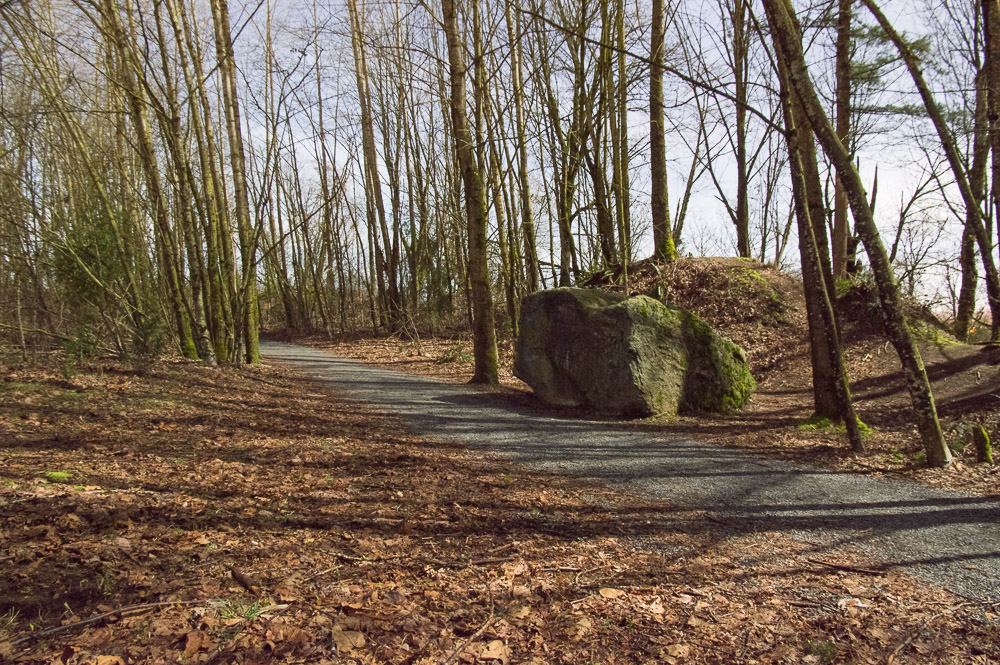
Image created in camera by moonlight using 4 30second exposures
One of the restrictions of many DSLR cameras is the limit of the longest exposure you can set is 30 seconds. This forces you to use bulb mode and a separate method of timing the exposure. There is an alternative though with newer Pentax cameras such as the K-3, K-3II and recently announced K-1. The way it is achieved is by changing the drive mode to interval composite. When set to this mode you also want to set the combining to additive so that all the exposures are summed together into one file. 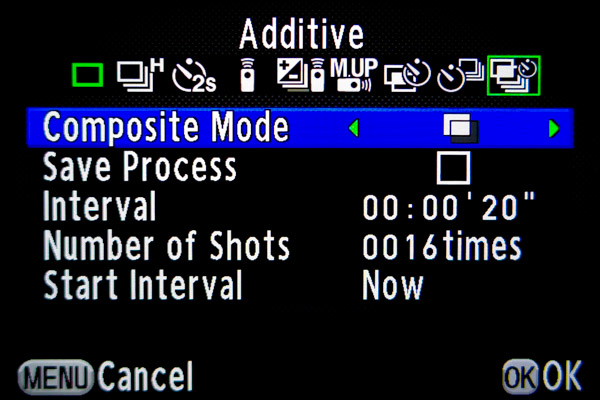
Next select an interval that is larger than the length of the exposure (This is a necessary setting). So if your going to use the 30 second maximum set this to around 33 seconds as that allows enough time for the exposure and processing of the file. After that it’s just a matter of selecting how many exposures or in this case how many times 30 seconds. For example 4 exposures would equal 2 minutes, 20 would result in a total of 10 minutes. There is a drawback and that is the necessary short gap between exposures. If there is something moving in a predictable way such as a star it’s going to leave a small gap where it isn’t recorded.

Here the multiple exposures have given my time to walk around in the scene and manual trigger a flash
Of course you can also use a shutter release cable in bulb mode and lock it down I just wanted to present an alternative method that is more automatic and controllable
Back before digital there really was only one way to create star trail images and that was to use a very long exposure and some trial and error. You can still do this but digital sensors behave differently than film over long periods and digital noise can become an issue. Some people have used a different method where they capture multiple images over a period of time perhaps hundreds of them and then stack them using computer software. The new Pentax K-1 apparently has a new composition mode that facilitates doing this in camera referred to as star streams (It turns out that that feature is actually a method of creating 4K time-lapse movies where the star trail ends fade out after a period of time, it will be interesting to see) but I wanted to share how you can do it now with the K-3 or K-3II
You still use the image composite drive mode but rather than setting the combining to ‘additive’ you want to set it to ‘bright’
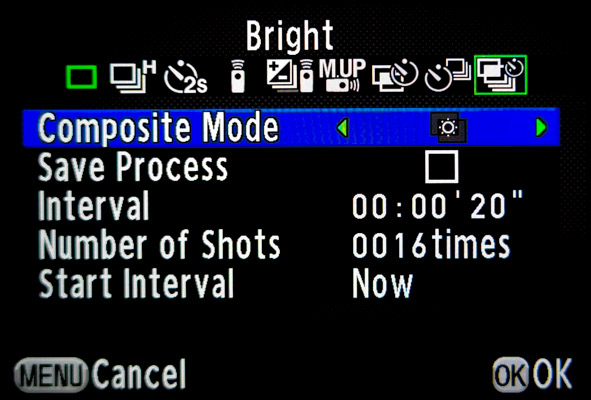
This way bright objects such as stars will be added to the exposure while darker things such as a foreground will be left dark. This is different from a long exposure because of the way the frames are combined and is most easily illustrated. The following pictures where both taken with settings of ISO 1600 f5.6 120 Seconds. The one on the left with bulb mode and the one on the right by combining 8 15 second exposures.
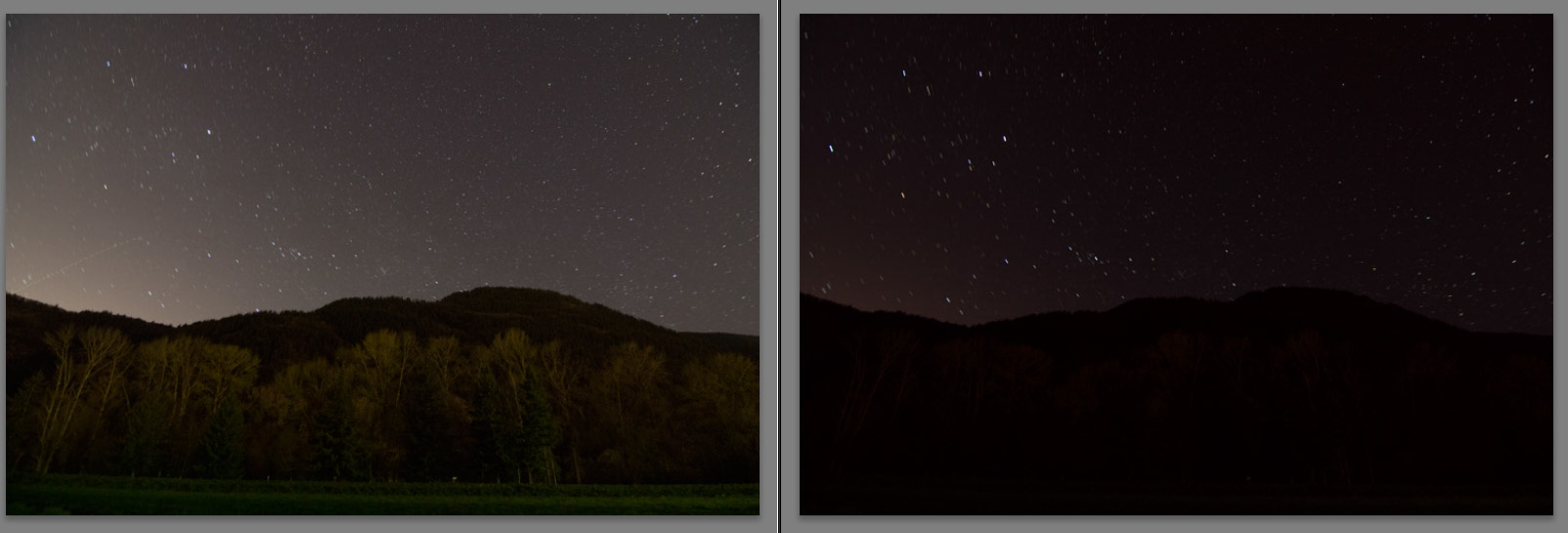
While not long enough to really show the star trails yet you can see that the accumulation of light pollution and noise is having an adverse effect on the long exposure more than the composite image. Also at some point continuing on in bulb mode the foreground would become over exposed.
In this next image I’ve stepped it up to 18 exposures of 20 seconds for a total of 6 minutes which is still too short a time to create a dramatic image but this can easily be extended further by just adjusting the number of images to be ‘stacked’
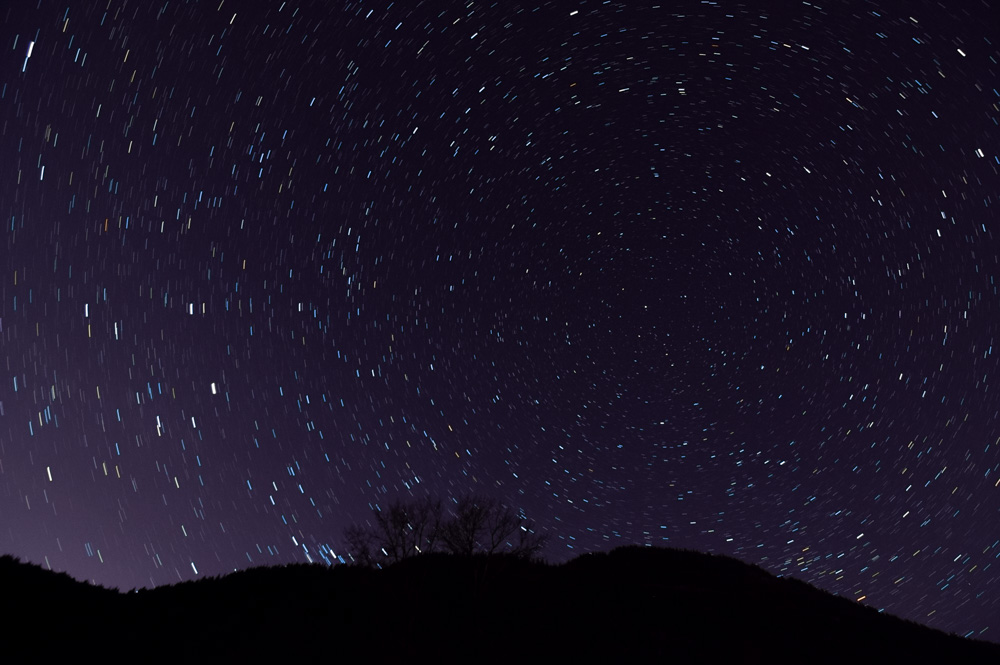
If I get a clear night in the near future I will update this with a longer capture. The point though is that there are tools built into these cameras that are waiting for creative exploration. As a side note the image that is generated can be a RAW file and tends to have less noise due to the combining of the images. Also generating images in this way doesn’t require dark frame subtraction and the time penalty that entails. Although the dark frame count down timer on the top LCD is a nice touch its like waiting for water to boil and is lost time. And of course you aren’t burdened with dealing with a whole pile of files on your card and in your computer which is a very film like notion.
5 comments | tags: Digital, long exposure, Pentax, star trails | posted in Cameras, Photography, Uncategorized
Mar
28
2016

The Minolta 7s rangefinder has a bright 45mm f1.8 lens built with 6 elements. While it has an electronic shutter I much prefer to use it in full manual operation where a 1.35V battery isn’t even required. That being said the aperture and shutter speed are set using two narrow rings on the lens barrel. They are adjacent to each other so care needs to be taken when changing the exposure. The side benefit of this arrangement and its reason is so that you can change both values in step keeping the same exposure while changing the shutter speed and aperture much like a modern Program mode. The shutter on the Himatic 7s sounds like it’s capable of chopping vegetables but they also appear to be extremely reliable ( I do not recall coming across any of these cameras with a stuck shutter). The viewfinder is bright and large and the framing lines move with focus to adjust for parallax. The one big knock on the Himatic 7s is its size and weight it’s a beast weighing in at 720grams and a full inch wider than a Himatic E or F. When you read out something like an inch wider it doesn’t sound like that much but in practice that is a huge difference.
For this roll of Kodak 800 I pushed the limits of this camera, shooting a series of nocturnes under very low levels of illumination. The shutter only goes down to 1/4 of a second but even at this speed some form of support is required to limit the amount of blur induced. Again shooting in manual mode allows full control over exposure and really I’m not confident that the light meter of this or any camera from 1966 can deal with this low a light level.
For some daylight photography and a better idea of what this camera can produce Minolta Himatic 7s
3 comments | posted in Cameras, Photography
Mar
24
2016
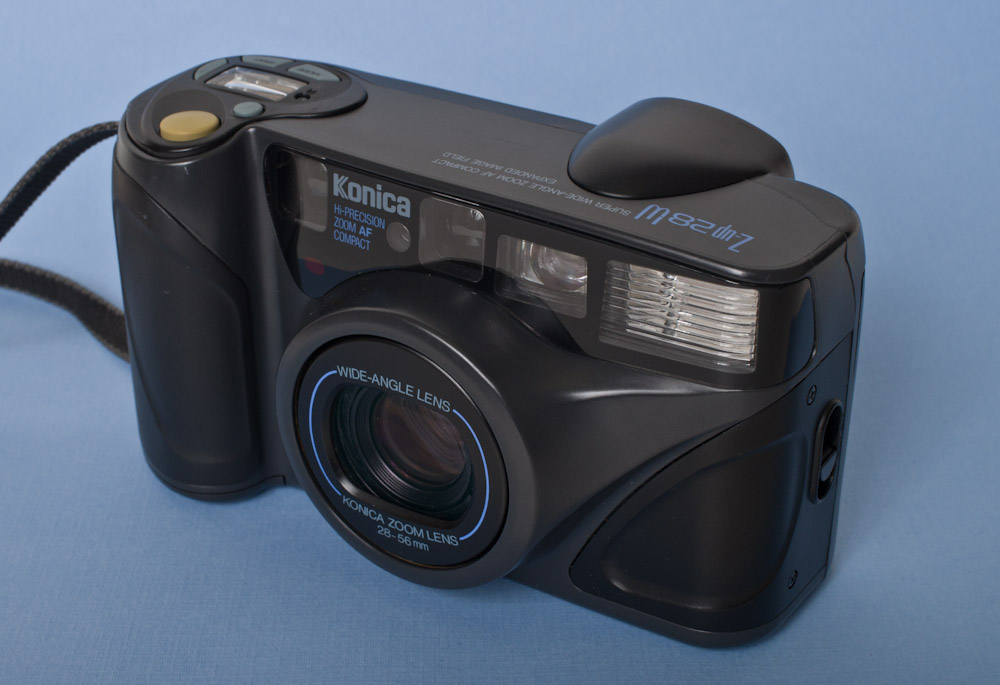 The Konica Z-Up 28W is a large camera considering it only provides a 2X zoom lens but it is one of the better point and shoot cameras that provide a 28mm focal length. I’ve written previously about it here Konica Zup28W and here Konica Zup28 Kodak 400
The Konica Z-Up 28W is a large camera considering it only provides a 2X zoom lens but it is one of the better point and shoot cameras that provide a 28mm focal length. I’ve written previously about it here Konica Zup28W and here Konica Zup28 Kodak 400
no comments | posted in Cameras, Photography
Mar
20
2016

The above screen shot from the LG G4 pretty much sums it up, control. When you select manual mode it turns all the relevant photography levers over to you. What do you compare a phone camera against these days? Other phones or is it fair to compare them against dedicated one purpose cameras. Seeing as the camera phone has killed the market for anything other than higher end digital cameras I think its only fair to see where a camera phone excels and fails against all cameras.
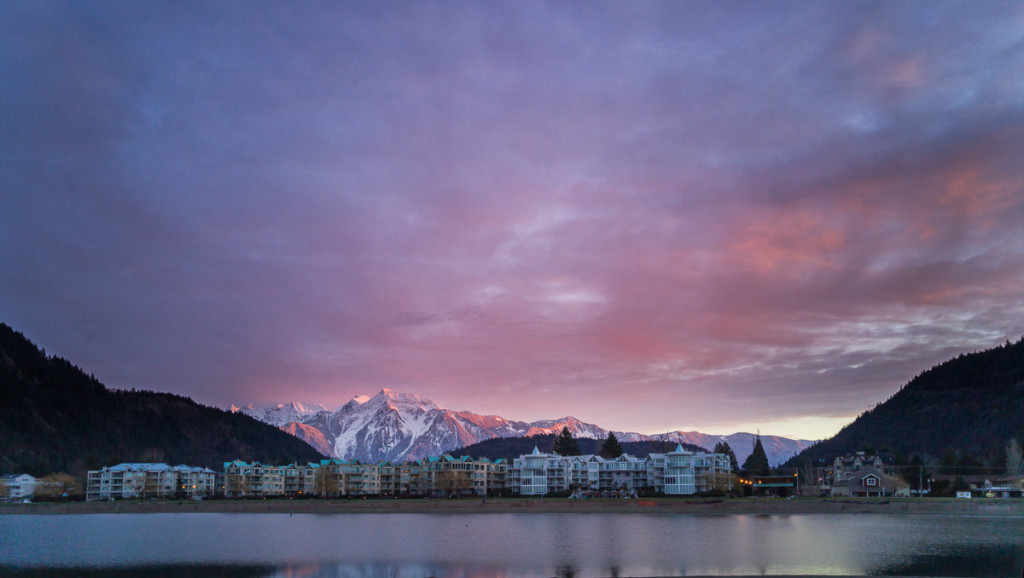
The ‘Excellent’ Shooting at the base ISO of 50 while adjusting the shutter speed results in a malleable RAW file that can be easily edited and adjusted either in camera [sic phone] or later in a computer.

The ‘Inferior’ if you want to preserve the highlights in a bright scene with a lot of contrast then shooting RAW is a must as you can see from the above images where the RAW version (top) has retained detail and the jpeg has just given up and gone for a beer.

And finally the ‘Unsightly’ this 100% crop is from an under lit scene using ISO 2000 with no noise reduction. And there is a lot of noise that needs reducing, too much really for any algorithms I have at my disposal. Even at what would be a modest 400 ISO in the world of ‘cameras’ there is a considerable amount of noise. And here is where we find the edge of capabilities with cell phone cameras at this point. Even the best of them can not defy physics and the state of sensor technology. To hide that amount of noise its necessary to also hide the details in a processed mush. This is true really for all the phones today that have small sensors. It is only because of the ability to shoot RAW in this case that we can see behind the processing. As with anything there are trade offs and limits.
Another aspect of the camera in the G4 that is revealed when shooting RAW is the level of vignette. The corners of the image are darkened by about 1 stop of exposure. It would be nice if in manual mode that you could still allow automatic white balance but when they say manual they mean it. All of this is handled by the G4 if you shoot in Auto mode of course.
The lens has a focal length of 4.42mm and a fixed aperture of f1.8 which is fast and offers some level of focus separation in an image though not that much do to the comparatively small sensor. The 4.42mm equates to a field of view roughly like that of a 28mm lens on a 35mm film camera. As there is no way to change the focal length the wide angle is a good compromise.
If your willing to set the ability to shoot RAW aside and install the camera app from Google you get some different functionality such as photo spheres and panoramas and also the interesting ‘Blur’. Blur guides you and takes multiple images that it uses to build a depth map so that it can blur (there is the name) the background behind an object as if the image had been shot with a camera with a larger sensor.

But I digress I just wanted to point out that when it comes to phones it isn’t all about the hardware the processing becomes an integral part and is likely where we will see more innovation in the next while.
As I’m looking at this from the aspect of using the phone to the exclusion of a dedicated camera I should talk about the ergonomics. This is the first phone I have had that did not have a button that could be dedicated to the release of the shutter. Yes I know you can use the volume buttons that are situated right next to the lens but that is a mere technicality, it’s like having a toilet handle inside the toilet bowl. The problem with the lack of a shutter button is that it can force you to take your attention away from what you are taking a picture of in order to make sure your finger lands on the right spot on the screen. Additionally the motion of your finger makes it just a little harder to hold the phone steady. You can try it yourself with any phone by comparing tapping the screen vs squeezing the edge with one finger, a shutter button is just better. The lens is situated nearly at the top of the phone or on the extreme left when holding it in landscape orientation so you need to be a little careful that a finger doesn’t find its way into the corner of a picture. The screen though is large and looks fantastic and so makes a great way to compose pictures.
 The 16Mpixels are actually useful and record a lot of detail as you can see above in this RAW capture. The out of phone jpeg version that was recorded at the same time deals with some of the colour noise but at the expense of some fine detail.
The 16Mpixels are actually useful and record a lot of detail as you can see above in this RAW capture. The out of phone jpeg version that was recorded at the same time deals with some of the colour noise but at the expense of some fine detail.
My final thoughts are that for most well lit situations where you have the time to take care in adjusting exposure and a wide angle will work then the Lg G4 makes a good camera not just a camera phone. Outside that scope though it falls victim to the same issues as all phones, poor low light performance and ergonomics. You may disagree with me but if I were given the option of a Ricoh GR or an LG G4 in order to take a picture I would pick up the Ricoh unless you wanted a photo sphere or to share it online immediately but then those are other conversations.
no comments | posted in Cameras, Photography
Mar
16
2016
 Give me the bright greens of summer, momma don’t take my Agfa 200 away. Not to worry I was only referencing the Paul Simon song Kodachrome I have no inside information about this film. Also its really nothing like Kodachrome, Agfa Vista 200 is a colour negative film with a lot of exposure latitude and somewhat muted colours. Coupled with the excellent Zeiss lens in the Yashica T3 you get negatives that offer plenty of adjustability.
Give me the bright greens of summer, momma don’t take my Agfa 200 away. Not to worry I was only referencing the Paul Simon song Kodachrome I have no inside information about this film. Also its really nothing like Kodachrome, Agfa Vista 200 is a colour negative film with a lot of exposure latitude and somewhat muted colours. Coupled with the excellent Zeiss lens in the Yashica T3 you get negatives that offer plenty of adjustability.
2 comments | posted in Cameras, Photography
Mar
12
2016
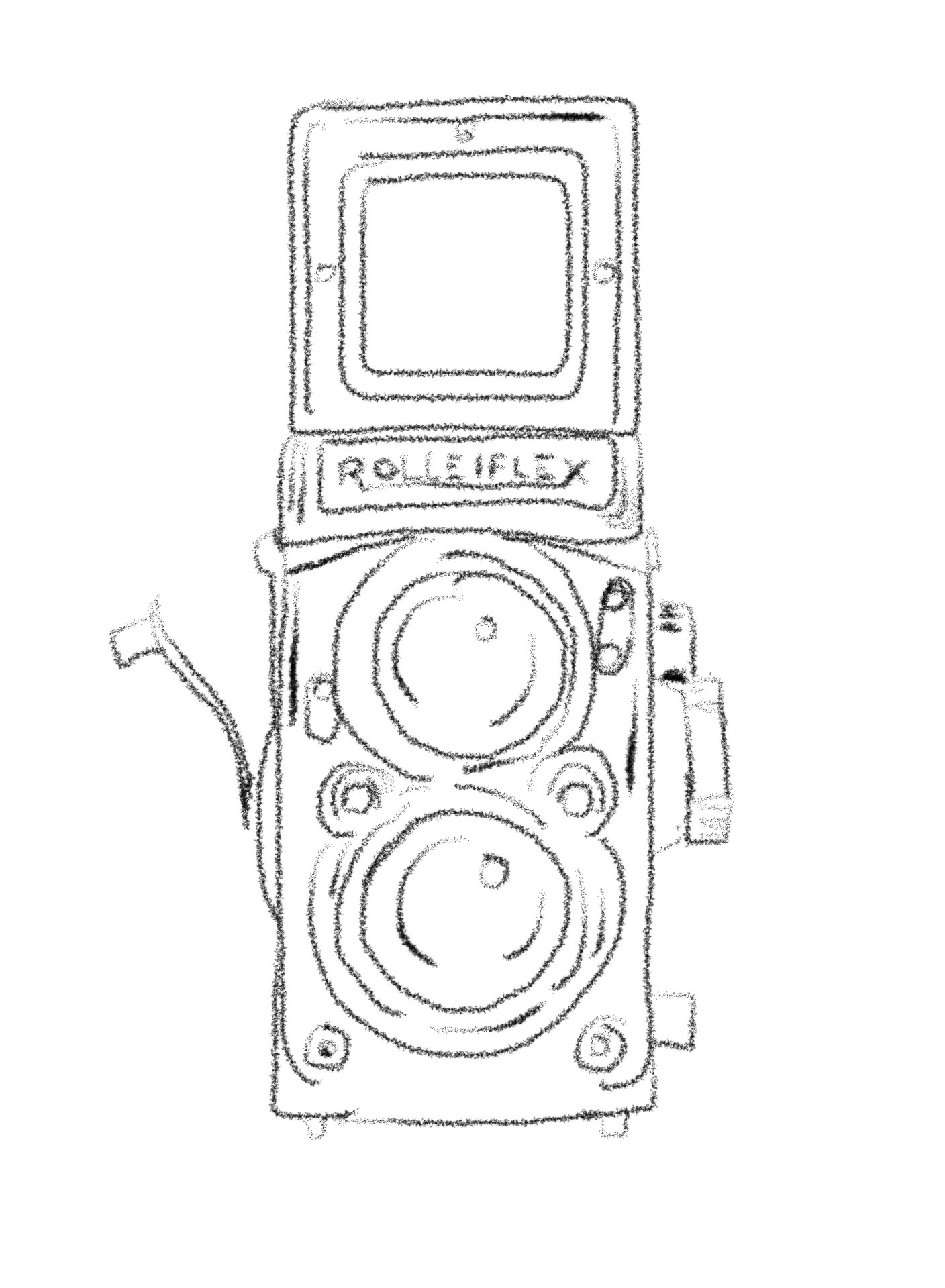
Some images from the fantastic Rolleiflex 2.8 which remains one of my favourite cameras of all time both for its image making ability and its design. A camera so beautiful that there is a genre of pictures of people taking self portraits in reflective surfaces with their Rolleiflex (Okay some of that may be attributable to the fact that you don’t need to hold the camera up to your eye and block your face but still )
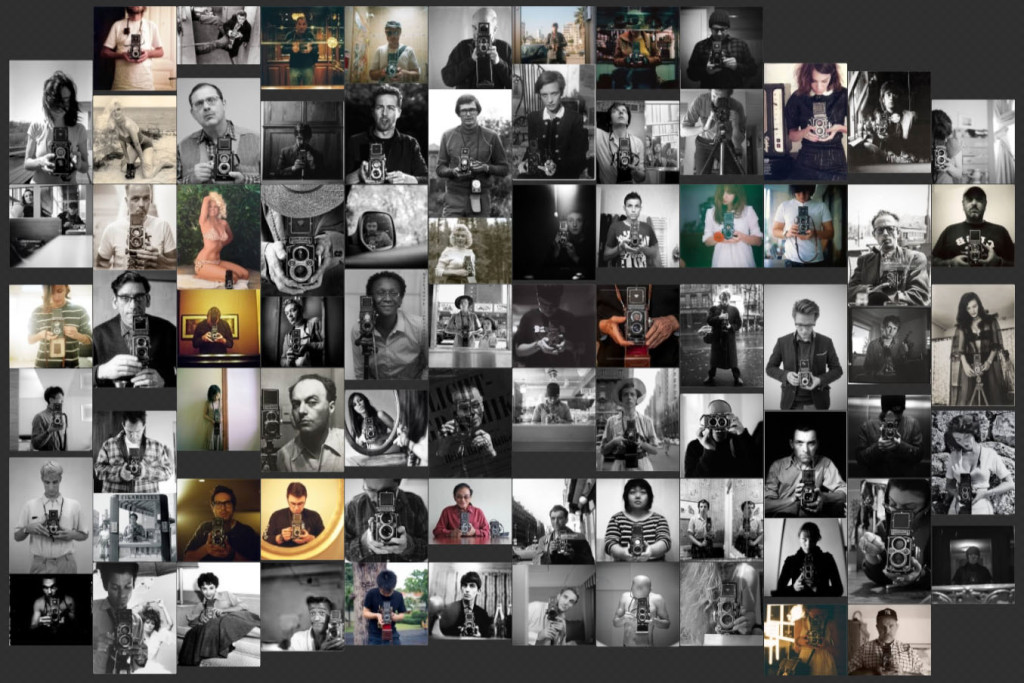
no comments | posted in Cameras, Photography














